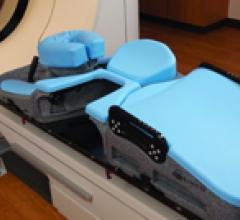
The climate of today's technology landscape within the healthcare arena seems to be changing at an ever-increasing rate. That can be either good news or great news depending on where you are in the need-to-purchase pipeline. Fortunately, for those needing to purchase inventory management systems, the climate will be like taking a trip to the Bahamas, metaphorically speaking. In other words, there have been a lot of worthwhile technological advances made within this arena during the past several years that have made these systems not only cost effective, but also extremely versatile and adaptable to just about any healthcare setting.
Given the continuing saga of nursing staff shortfalls across the industry coupled with the increasingly burdensome load of the healthcare paperwork trail, it would seem that the manufacturers of these inventory management systems have been designing them with loads of features and attributes that drastically reduce the labor-intensive tasks of the historically ugly supply chain. Ironically, these systems end up being the electronic “best friends” of the nursing staffs and physicians even though they are frequently “pushed” for purchase by administrative leadership.
So, what is it that makes these modern systems so attractive to both the healthcare providers and the administrators? The phrase that comes to mind is simultaneous benefit. That simultaneous benefit is derived from a wide arena of automated technologies within these inventory management systems that drastically improves the effective management of the supply side of the operational setting while reducing the work routines of the nursing staff and supply support personnel.
The Supply & Demand Chasm
Without a doubt, one of the key problems facing hospitals and health systems in controlling operational costs is that patient throughput is usually much lower than associated supply usage — in many cases, there is a significant difference between the amount of supplies actually used versus the expected number used. Unfortunately, in many healthcare treatment settings, this usage varies as much as 10 to 50 percent above expected utilization.
Does this inventory supply discrepancy sound like something you want to try and solve tomorrow? Good luck. And please don't ask the nursing staff to help. They are already being pushed to the limit!
So what can be done about it? One of the most common fixes to the leak in the supply chain is to place more inventory at the point of use. How does that help? In truth, it doesn't really help the loss of supplies but it does ensure that nursing and physician providers don't waste their valuable time looking for a much-needed supply item. And the patients probably don't have much patience waiting for a common supply item that isn't immediately available from the patient care setting.
Today's inventory management systems are capable of handling these types of problems and a host of similar supply-chain related issues that plague the efficiency and cost effectiveness of everyday healthcare. Manufacturers have produced a litany of helpful automated processes that create an ability to improve quality supply functions at the user level while simultaneously creating efficiencies within the work areas.
For example, Omnicell provides an implant tracking module that records lot and serial number info for surgical implants (i.e., in accordance with FDA requirements). Omnicell also has an excellent Web-based procurement application that automates and integrates the requisition and approval process, including purchase rules, approval gatekeeping solutions (that are hospital specific). Common gatekeeping automated attributes include negotiated pricing; proper routing of approvals for purchase; spending limits/budget control aspects; and other similar purchasing procedural processes.
Pyxis has a wide variety of specific applications as well, such as scalable bar coding technology that can be used with existing inventory management processes within a hospital or health system, allowing for inventory management and replenishment information to be processed electronically versus manual operations.
Pyxis also supports temperature-sensitive medication dispensing and monitoring. Both companies — and many others — have secure closed systems (automated cabinets) that individually track usage, replenishment and restock activities with state-of-the-art touchscreen technologies. All of these systems transmit information regarding on-hand supplies, par levels, usage histories, per patient and per procedural costs to and through the inventory management system within the hospital to include financial data streams.
The integration aspects of these sophisticated technologies allows for the seamless flow of information between all the critical support infrastructures to include financial, electronic data interchange, electronic commerce, inventory management and a host of similar venues.
The essence of inventory management systems is that they automate the supply chain so each and every “transaction” within the pipeline is visible and manageable to even the busiest of staffs. Fortunately, that visibility and manageability aspect creates a cost effective and efficient supply chain infrastructure that keeps everyone happy with the status of this very important patient care link. Inventory management systems also positively impact the quality of patient and provider care. Patients can feel and see the difference between a well-oiled machine and the
historical alternative.


 March 03, 2014
March 03, 2014 





